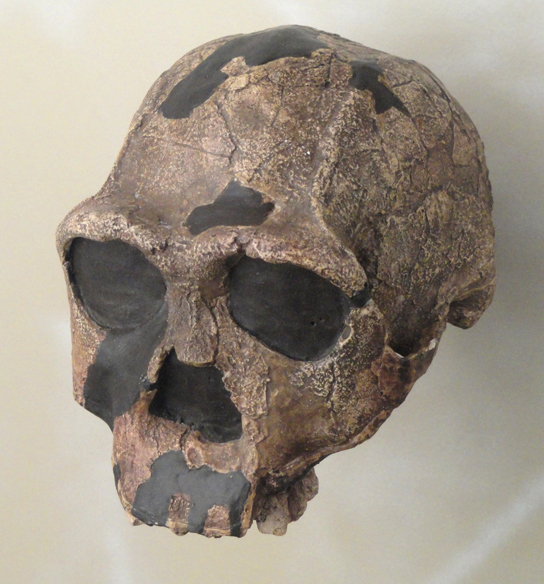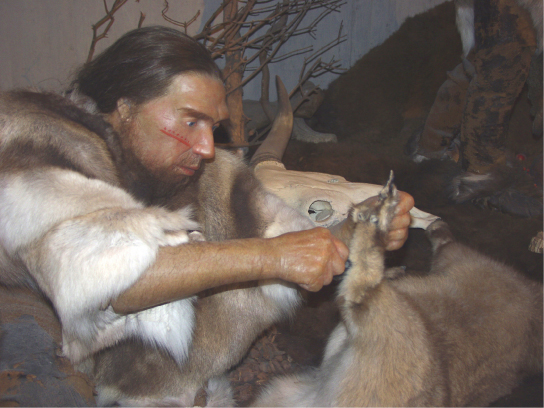| << Chapter < Page | Chapter >> Page > |

A number of species, sometimes called archaic Homo sapiens , apparently evolved from H . erectus starting about 500,000 years ago. These species include Homo heidelbergensis , Homo rhodesiensis , and Homo neanderthalensis . These archaic H . sapiens had a brain size similar to that of modern humans, averaging 1,200–1,400 cubic centimeters. They differed from modern humans by having a thick skull, a prominent brow ridge, and a receding chin. Some of these species survived until 30,000–10,000 years ago, overlapping with modern humans ( [link] ).

There is considerable debate about the origins of anatomically modern humans or Homo sapiens sapiens . As discussed earlier, H . erectus migrated out of Africa and into Asia and Europe in the first major wave of migration about 1.5 million years ago. It is thought that modern humans arose in Africa from H . erectus and migrated out of Africa about 100,000 years ago in a second major migration wave. Then, modern humans replaced H . erectus species that had migrated into Asia and Europe in the first wave.
This evolutionary timeline is supported by molecular evidence. One approach to studying the origins of modern humans is to examine mitochondrial DNA (mtDNA) from populations around the world. Because a fetus develops from an egg containing its mother’s mitochondria (which have their own, non-nuclear DNA), mtDNA is passed entirely through the maternal line. Mutations in mtDNA can now be used to estimate the timeline of genetic divergence. The resulting evidence suggests that all modern humans have mtDNA inherited from a common ancestor that lived in Africa about 160,000 years ago. Another approach to the molecular understanding of human evolution is to examine the Y chromosome, which is passed from father to son. This evidence suggests that all men today inherited a Y chromosome from a male that lived in Africa about 140,000 years ago.
All primate species possess adaptations for climbing trees, as they all probably descended from tree-dwellers, although not all species are arboreal. Other characteristics of primates are brains that are larger than those of other mammals, claws that have been modified into flattened nails, typically only one young per pregnancy, stereoscopic vision, and a trend toward holding the body upright. Primates are divided into two groups: prosimians and anthropoids. Monkeys evolved from prosimians during the Oligocene Epoch. Apes evolved from catarrhines in Africa during the Miocene Epoch. Apes are divided into the lesser apes and the greater apes. Hominins include those groups that gave rise to our species, such as Australopithecus and H . erectus , and those groups that can be considered “cousins” of humans, such as Neanderthals. Fossil evidence shows that hominins at the time of Australopithecus were walking upright, the first evidence of bipedal hominins. A number of species, sometimes called archaic H . sapiens , evolved from H . erectus approximately 500,000 years ago. There is considerable debate about the origins of anatomically modern humans or H . sapiens sapiens .

Notification Switch
Would you like to follow the 'Biology' conversation and receive update notifications?